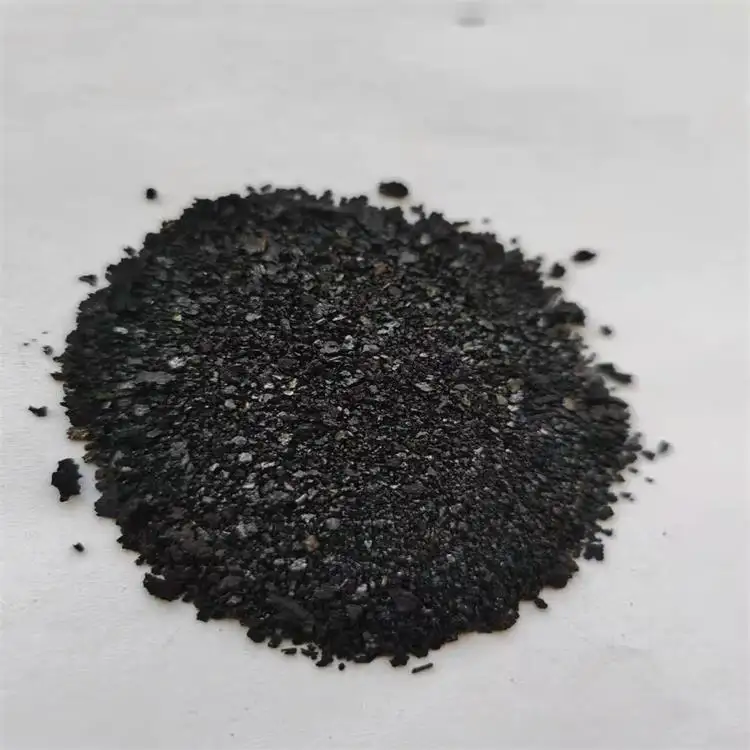Safety Data Sheets for Sulphur Black Used in Various Industries and Applications
The Significance of Sulphur Black in Industry and Safety Guidelines
Sulphur black is a widely used dye, especially prominent in the textile industry due to its rich, deep color. This product is particularly favored for dyeing cotton, wool, and synthetic fibers, providing a long-lasting and wash-resistant finish. Understanding the properties, applications, and safety guidelines surrounding sulphur black is essential for manufacturers, suppliers, and users to ensure both efficacy and safety in handling.
Chemical Properties and Applications
Sulphur black is typically produced by reducing sulfur compounds, resulting in a water-insoluble powder that can yield a black dye when treated with alkaline agents. The dyeing process with sulphur black involves several steps, including the reduction stage, where the dye is converted into a soluble form, followed by the actual dyeing operation where it binds to the fabric. The final step involves oxidizing the dye, which fixes it onto the fibers.
This type of dye is prized not only for its colorfastness but also for its cost-effectiveness, making it a popular choice among textile manufacturers. In addition to textiles, sulphur black finds applications in other industries, including plastics, inks, and coatings. Its versatility extends to providing a base for other types of dyes, thus enhancing its utility in various formulations.
Safety Considerations
Though sulphur black serves many functions in industrial applications, it is crucial to approach it with caution
. The Material Safety Data Sheets (MSDS) for sulphur black provide critical information regarding its handling, storage, and emergency measures.sulphur black msds companies

1. Hazards and Risks According to MSDS guidelines, sulphur black can pose certain health risks if mishandled. Inhalation of dust particles may cause respiratory irritation, while skin and eye contact can lead to irritation or sensitization. Prolonged exposure may have more severe health implications.
2. Personal Protective Equipment (PPE) When working with sulphur black, it is advised to wear appropriate PPE, including gloves, safety goggles, and masks. This reduces the risk of exposure and ensures a safer working environment for operators.
3. Storage Recommendations For storage, sulphur black should be kept in a cool, dry place away from direct sunlight and incompatible substances, such as strong oxidizers. Containers should be tightly sealed to prevent moisture absorption, which can degrade the quality of the dye.
4. Emergency Measures In the event of a spill, it is important to follow environmental protocols for cleanup. Sweep up the material carefully and place it in appropriate waste containers. Dispose of sulphur black according to local regulations, ensuring it does not contaminate water sources or ecosystems.
Conclusion
As industries continue to seek cost-effective and efficient solutions for dyeing and coloring processes, sulphur black remains a staple in various applications. However, the importance of adhering to safety guidelines cannot be overstated. By understanding the properties, applications, and associated risks of sulphur black, companies can ensure a balance between productivity and safety in their operations. Ensuring compliance with MSDS recommendations not only protects workers but also upholds corporate responsibility towards environmental stewardship. In a world increasingly aware of industrial safety and sustainability, responsible use of such materials will contribute significantly to long-term success and innovation in the textile and manufacturing sectors.
-
Sulphur Black Dyes in Daily Use
NewsMay.07,2025
-
Indigo Dyeing for Daily Life
NewsMay.07,2025
-
Indigo Dye Production and Its Growing Demand
NewsMay.07,2025
-
Color That Lasts
NewsMay.07,2025
-
Bromo Indigo for Modern Use
NewsMay.07,2025
-
Blue From Nature
NewsMay.07,2025
-
The Timeless Color in Fashion and Textiles
NewsApr.10,2025

Sulphur Black
1.Name: sulphur black; Sulfur Black; Sulphur Black 1;
2.Structure formula:
3.Molecule formula: C6H4N2O5
4.CAS No.: 1326-82-5
5.HS code: 32041911
6.Product specification:Appearance:black phosphorus flakes; black liquid

Bromo Indigo; Vat Bromo-Indigo; C.I.Vat Blue 5
1.Name: Bromo indigo; Vat bromo-indigo; C.I.Vat blue 5;
2.Structure formula:
3.Molecule formula: C16H6Br4N2O2
4.CAS No.: 2475-31-2
5.HS code: 3204151000 6.Major usage and instruction: Be mainly used to dye cotton fabrics.

Indigo Blue Vat Blue
1.Name: indigo blue,vat blue 1,
2.Structure formula:
3.Molecule formula: C16H10N2O2
4.. CAS No.: 482-89-3
5.Molecule weight: 262.62
6.HS code: 3204151000
7.Major usage and instruction: Be mainly used to dye cotton fabrics.

